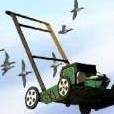Wet-Wingologists FXE
-
Members Online
- MatthiasArnold
- LooneyMooney
- EricJ
- jetdriven
- mluvara
- georgematthews
- Patrick Horan
- ElkoRandy20J
- acekng1
- ProtoFly
- Greg Ellis
- BaileyWood-EAGLE
- 1980Mooney
- MikeOH
- 7.Mooney.Driver.0
- compjtc
- Nico1
- hammdo
- Resanborn
- TheAv8r
- phrogpilot73
- Bunti
- Justin Schmidt
- glbtrottr
- AJ88V
- Marc_B
- NickG
- sdmideas
- 201er
- dzeleski
- Bastian
- Paul Thomas
- George Braly
- Fly Boomer
- Joe Linnebur
- Timothy Percarpio
- affricate
- Schllc


Recommended Posts
Join the conversation
You can post now and register later. If you have an account, sign in now to post with your account.